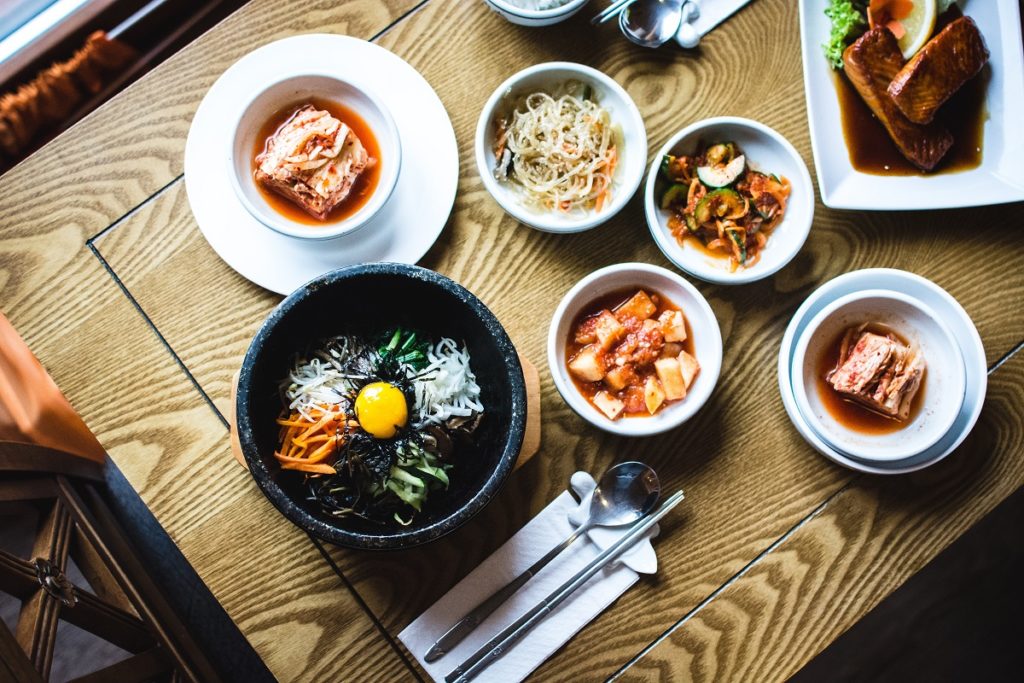There is a Korean invasion happening all over the world. It’s not just K-Pop or the rising popularity of telenovelas, but more importantly, a growing following for Korean cuisine. While it may not be as popular as Japanese food yet, Korean cuisine is gradually taking over the hearts and stomachs of millions of diners and foodies all over the globe.
One thing that’s gaining attention is the spicy, juicy, and sticky Korean fried chicken you’ll often see on the menu of most restaurants or food bars. It’s becoming known for being the perfect bar food and goes well with any kind of beer or spirits. If you’re wondering, yes, there’s more to Korean cuisine than just kimchi, although it still plays an integral role in this type of food.
Here are a few popular Korean dishes worth trying out:
Samgyeopsal
Samgyeopsal restaurants can be seen anywhere. It’s getting popular over the years because of so many reasons. Who would not love to eat in a place where you can feel a lively atmosphere with shots of soju, sizzling pork strips on a grill, and a random shout for “one more serving, please!”
Every serve of Samgyeopsal comes with lettuce, sliced onions, perilla leaves, and raw garlic kimchi. This cuisine is for everyone who wants to experience a bit of the Korean atmosphere.
Bibimbap
This is a lunch-in-a-bowl that comes with rice, beef, mixed vegetables, egg, sesame oil, and chili paste for seasoning. Bibimbap was initially served to Korean kings decades ago. But the modern days have made this royal dish available to the masses. It comes at a low price that you can quickly find in any Koren restaurant if you want to enjoy your favorite lunch.
Galbi
The word Galbi refers to “rib,” and it technically came from pork and chicken. But if you will only speak “galbi” sans modifiers, you’re referring to thick slabs of meat that have been marinated in a mixture of sugar, soy sauce, chopped garlic, and grilled at the top of a proper fire.
You can also use beef galbi when making soup (galbitang) and steamed galbi (galbijjim).
Japchae
You may have seen this simple dish in various Korean feasts and potlucks, but this typical side dish is worth a try. This dish is made from cellophane noodles, assorted vegetables, and pork then sauteed in soy sauce. If you are planning to cook your version of japchae, there is no rule with the kind of vegetables that you can use. But for the standard recipe, japchae must go with carrots, leeks, mushrooms, onions, and spinach.
Bulgogi

Bulgogi represents Korean cuisine as a whole. This meat dish is well-known because of its sweetness. Don’t be surprised if you see bulgogi-flavored burgers in the restaurant’s menu as you order your afternoon snack.
Bingsu
This is one of the Korean desserts that you should try the next time you visit a Korean restaurant. It has sweetened red beans (pat), and tteok is being served on a bed of shaved ice (bingsu). Other variations that you may find are misutgaru, condensed milk, ice cream, syrup, and corn flakes. If you get the chance to visit Seoul during the summer, any fast food restaurant can offer you a delicious taste of Bingsu.
Why is it generous?
Banchan, or Bansang, is used to refer to the different small side dishes served together with rice in Korean cuisine. These dishes are refillable and come free if you eat in any one of the Korean restaurants in your area. The family-style serving of dishes also adds to the generous nature of Korean cuisine. These dishes are meant to be shared and enjoyed with friends and family in a social setting.
Of course, that doesn’t mean you can’t enjoy a serving of Korean Fried Chicken or Bulgogi on your own. Whether you’re in the mood

